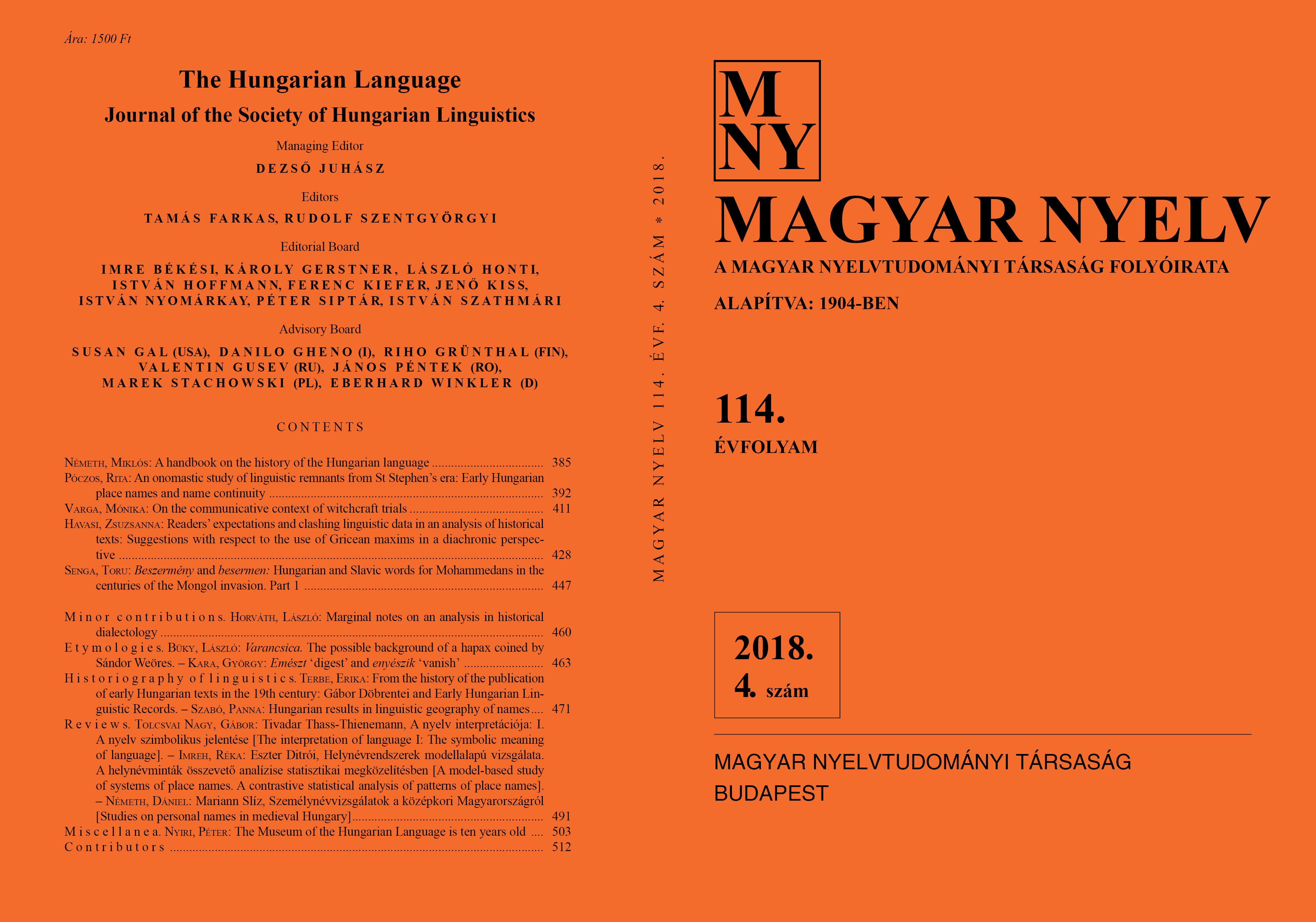A handbook on the history of the Hungarian language
DOI:
https://doi.org/10.18349/MagyarNyelv.2018.4.385Keywords:
handbook, history of Hungarian, history of varieties of Hungarian, system history, history of the Hungarian language communityAbstract
This handbook is the first of its genre, given that this type of compendium of Hungarian historical linguistics had never been published before. The book under review is a synthesis that is also unprecedented in its perspective, reflecting a conception of historical linguistics that was born after the sociolinguistic-pragmatic revolution of that discipline. It takes the history of a language to be that of language varieties and of individual language uses, it reckons with the heterogeneity of language use and with the social and pragmatic factors determining the processes of the history of a language. The volume discusses complex problems of historical linguistics in an appropriately concise manner, and addresses the non-professional reader in an easy-to-access style, yet it also presents the most recent results of relevant research. Some portions fill in gaps, both scholarly and disseminational ones, and settle debts of several decades.
Downloads
Published
Issue
Section
License
Copyright (c) 2024 Miklós Németh

This work is licensed under a Creative Commons Attribution-NonCommercial-NoDerivatives 4.0 International License.
Magyar Nyelv is a Diamond Open Access periodical. Documents can be freely downloaded and duplicated in an electronic format, and can be used unchanged and with due reference to the original source. Such use must not serve commercial purposes. In the case of any form of dissemination and use, Hungarian Copyright Act LXXVI/1999 and related laws are to be observed. The electronic version of the journal is subject to the regulations of CC BY-NC-ND (Creative Commons – Attribution-NonCommercial-NoDerivatives).
The journal permits its authors, at no cost and without any temporal limitation, to make pre-print copies of their manuscripts publicly available via email or in their own homepage or that of their institution, or in either closed or free-for-all repositories of their institutions/universities, or other non-profit websites, in the form accepted by the journal editor for publication and even containing amendments on the basis of reviewers’ comments. When the authors publicize their papers in this manner, they have to warn their readers that the manuscript at hand is not the final published version of the work. Once the paper has been published in a printed or online form, the authors are allowed (and advised) to use that (post-print) version for the above purposes. In that case, they have to indicate the exact location and other data of the journal publication. The authors retain the copyright of their papers; however, in the case of an occasional secondary publication, the bibliographical data of the first publication have to be included.



